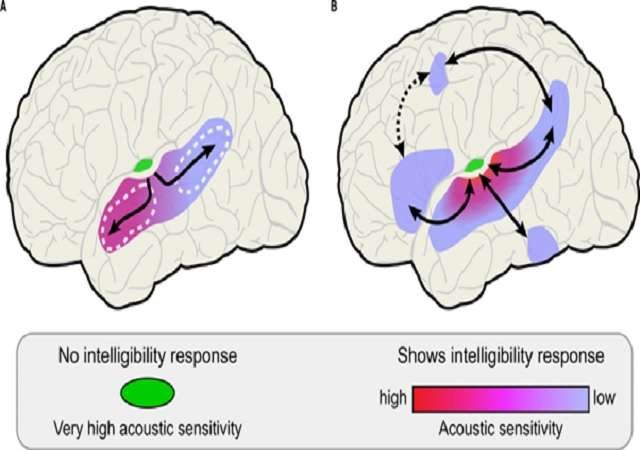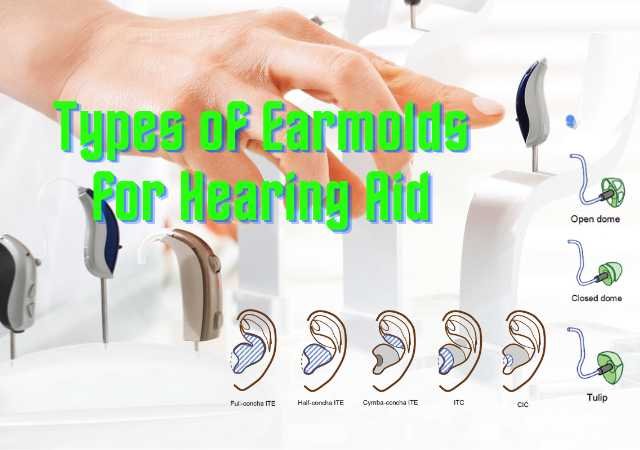Neurolinguistic Models of Language Processing: There are many schools of thought regarding the brain’s function with various aspects of information processing. These are the some different Neurolinguistic Models of Language Processing:
- Connectionist models
- Hierarchical models
- Process models
- Computational models
Connectionist Model
Connectionist model is Conceptual schemes that associate neuroanatomical structures and functions with various aspects of information processing.
- By the early 19th century, two clearly separate schools of thought regarding the brain’s function in language had developed. One school was comprised of those investigators who believed that specific (mental) functions were subserved by specific areas of the brain. Investigators supporting this view point became known as “localizationists”.
- Opponents to localizationists viewpoint, known as “holists”, believed that the mental function was the product of the entire brain working as a unit & that mental ability was a reflection of total brain volume.
- One of the early localizationists was Gall (1758-1828). He was the first to relate speech to a particular area of the brain.
- In 1861 by Paul Broca reported that the ‘motor speech area’ was located in the third frontal convolution.
- Wernicke pointed out that this area of cortex had two important characteristics.
- it was an area directly juxtaposed to the cortical area which receives the final connections of the auditory system, the post-thalamic auditory radiations.
- it was an area which itself was neither a primary sensory nor a primary motor area.
It was one of a number of areas called “association” areas, thought to be involved in more complex elaboration and modification of sensory & motor information.
- A disorder of the connecting pathway will cause the “conduction” aphasia predicted by Wernicke, & Lichtheim indicates that, the ability of such a patient to repeat would be impaired.
- Lichtheim also argued that clinical evidence supported the existence of separate area for the representation of the motor sequences involved in writing.
- Geschwind’s model (1965) describes
- There is more than one set of representations assigned to the center: in this case, a linguistic representation (the sounds of words) and a non-linguistic representation (the coded sensory properties of objects) are both involved in the processing going on in this area.
- The type of psycholinguistic functioning attributed to the inferior parietal lobe. First, this functioning is not one of the usual on-line psycholinguistic tasks of speaking, understanding spoken speech, writing and reading.
- Feature which distinguishes Geschwind’s model from those of the nineteenth-century connectionists is his commitment to an anatomical basis for the functional components and processes he postulates. There are no disembodied psychological elements such as “concept centers” in his work.
Modern connectionism has enormously influenced neurolinguisitc theory, especially in establishing the framework for investigating the anatomical basis of language and language breakdown with new radiological techniques.
Hierarchical Models
- The anatomical connectivity of the primate auditory system suggests that sound perception involves several hierarchical stages of analysis (Kaas et al., 1999 ), raising the question of how the processes required for human speech comprehension might map onto such a system.
- One intriguing possibility is that earlier areas of auditory cortex respond to acoustic differences in speech stimuli, but that later areas are insensitive to such features.
- Providing a consistent neural response to speech content despite variation in the acoustic signal is a critical feature of “higher level” speech processing regions because it indicates they respond to categorical speech information, such as phonemes and words, rather than idiosyncratic acoustic tokens.
- In a recent fMRI study, Okada et al. (2010) used multi-voxel pattern analysis (MVPA) to investigate neural responses to spoken sentences in canonical auditory cortex (i.e., superior temporal cortex), using a design modeled after Scott et al. (2000).
- Okada et al. (2010) used a factorial design that crossed speech clarity (clear speech vs. intelligible noise vocoded speech) with frequency order (normal vs. spectrally rotated).

FIGURE 1. HIERARCHICAL MODELS OF PROCESSING INTELLIGIBLE SPEECH. (A) Hierarchical processing in the temporal lobe, showing a posterior-anterior gradient in acoustic insensitivity moving away from primary auditory cortex. Posterior and anterior regions of STS discussed by Okada et al. (2010) are outlined in white. (B) An expanded model of hierarchical processing for speech that includes prefrontal, premotor/motor, and posterior inferotemporal regions.
Expanding on this description, we argue that a hierarchical model of speech comprehension necessarily includes regions of motor, premotor, and prefrontal cortex (Figure 1 B) as part of multiple parallel processing pathways that radiate outward from primary auditory areas (Davis and Johnsrude, 2007 ). Electrophysiological studies in non-human primates demonstrate auditory responses in frontal cortex, suggesting not only strong frontal involvement, but that these regions may indeed be viewed as part of the auditory system (Kaas et al., 1999 ; Romanski and Goldman-Rakic, 2002 ).
In summary, there is now consensus that hierarchical processing is a key organizational aspect of the human cortical auditory system. The results of Okada et al. (2010) uniquely bring into question the degree to which anterior temporal cortex is acoustically insensitive, suggesting a more posterior locus for abstract phonological processing.
Process Models
Wepman (1960), Osgood and Miron (1963) described the Speech and Language Processing Model (SLPM) in terms of input, output processes, audio, visual and tactile modality, and reflex, perceptual and representational level.
The SLPM was constructed using 7 considerations-
- For a model to be maximally useful it should focus on speech and language.
- Since the auditory- oral modalities are the basic of speech and language and the first to develop; these modalities may justifiably serve as the primary modalities explicated in a model.
- A diagnostically useful model should carefully describe and delineate observable speech and language behavior.
- A model should allow for specification of the anatomy and physiology underlying speech and language- the hypothesized internal process.
- The diagnostic model should assist in developing the interface between the physical basis of speech and language- anatomy and internal processing– and the observable speech and language behaviors.
- The model should help the diagnostician understand causal factors and hypothesize cause- effect relationships.
- A diagnostician’s model should help him develop ways of measuring speech and language disorders.
Components of the SLPM-
It has three major components-
- Environment component
- Processing components
- Product component
1. Environment Component: The speaker/first language learner functions in a multidimensional environment filled with innumerable influences that can affect speech and language. It has two major divisions:
- The Speech & Language input: this includes factors such as family constellation, ethnic membership, and birth order. It has three interacting contexts-
- The Interpersonal context
- The Multisensory context
- The Sociocultural context
- The multidimensional environment context: this includes factors such as family constellation, ethnic membership, and birth order. It has three interacting contexts-
- The Interpersonal context
- The Multisensory context
- The Sociocultural context
2. Processing Component: It is based on the assumption that different internal processing events takes place at different anatomic levels within the human being. The processing component is divided into 3 segments –
- Auditory- Reception Segment: it is a primary recognition system. It is made up of bilateral structure of auditory modality. The physical processes that take place here are referred to as prelinguistic processes, i.e., analyses that take place before spoken messages can be understood. The 4 physical processes are
- Auditory acceptance- transduction
- Auditory analysis- transmission
- Auditory reception analysis
- Auditory programming
- Central Language: thought Segment: on SLPM this segment is considered as a linguistic – cognitive processing system. It include 3 processes-
- Auditory programming
- Language- cognitive representation
- Speech programming
- Speech Production Segment: it is considered as a primary production system. The processes that take place in this segment are referred to as post linguistic processes, i.e. motor events occur after a message has been formulated. This process turns the message into spoken form. The physical processes involved are-
- speech programming
- speech initiation
- speech coordination- transmission
- speech actualization
3. Product Component: the product component is divided into 2 levels- speech product and language product.
- Speech product consist 5 parameters: vocal tone (loudness, pitch quality), resonance (oral, resonance), phonetic structure (physiological, perceptual, acoustic system), prosody (stress, intonation, timing rhythm).
- Language product consists of 4 parameters: phonologic, syntactic, semantic, and pragmatic.
Computational Models
The concepts of integration and feedback are best seen in more recent, computational models of specific language tasks. This type of model is a computer simulation of the cognitive representations and procedures that underlie the task, utilizing several levels of “nodes” with feedback and feedforward connections between each level.
In some of these models, the strength of the connections between nodes is not “programmed in,” but is learned through many repeated simulations (Plaut & Shallice, 1993; Seidenberg & McClelland, 1989).
Evidence for postulating specific characteristics of each model comes from patients whose pattern of performance can be simulated by “damaging” the simulation in some way (e.g., by reducing the connection strength between two levels of nodes).
- It is likely that each of these types of serial and computational models captures some of the characteristics of normal language processing.
- It is plausible that there are both feedback and feedforward interactions between at least some levels. (Dell, 1986; Dell, Burger, & Svec, 1997; Rapp & Goldrick, 2004).
- It is also likely that lexical and semantic representations consist of activation distributed across component units, some of which are shared by other, related representations (Plaut & Shallice, 1993; Seidenberg & McClelland, 1989).
References:
⇒ Language Intervention Strategies in Aphasia and Related Neurogenic Communication Disorders – Roberta Chapey, Ed.D. (Book)
⇒ Introduction to Neurogenic Communication Disorders – Robert H. Brookshire, PhD (Book)
You are reading about:
Neurolinguistic Models of Language Processing







0 Comments